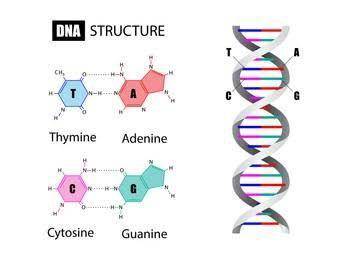
Biology, 20.09.2020 05:01 loyaltyandgood
Question 5
Ultraviolet (UV) radiation can damage DNA by breaking weak bonds. Which of the following best explains how this occurs?
A
UV radiation disrupts the double helix structure by breaking the covalent bonds between the nitrogenous base pairs,
B
UV radiation disrupts the double helix structure to breaking the hydrogen bonds between the nitrogenous base pairs.
С
UV radiation is able to break DNA strands in two by breaking covalent bonds between the sugar phosphate backbone molecules
D
UV radiation is able to break DNA strands in two by breaking hydrogen bonds between the sugar phosphate bachoone molecules

Answers: 2
Another question on Biology

Biology, 21.06.2019 19:30
Pepsin is an enzyme in the stomach that breaks polypeptides into amino acids. pepsin functions best at a ph of around 1.5. what would be the most likely result if the ph of the stomach were increased to 5
Answers: 1


Biology, 22.06.2019 16:40
What is the function of the nucleus in the euglena cells you observed?
Answers: 1

Biology, 22.06.2019 23:00
This problem has been solved! see the answerfor aerobic respiration, a variety of substances must be in a state of influx across the inner membrane. assuming a brain cell in which glucose is the sole energy source, indicate for each of the following substances whether you would expect a net flux across the membrane and if so, how many molecules will move in which direction per molecule of glucose catabolized.- electrons-pyruvate-oxygen-atp-adp-acetyl coa-glyceral-3-phosphate-nadh-fadh2-oxaloacetate-water-protons
Answers: 1
You know the right answer?
Question 5
Ultraviolet (UV) radiation can damage DNA by breaking weak bonds. Which of the following...
Questions

Biology, 26.02.2020 00:30

Biology, 26.02.2020 00:30




Mathematics, 26.02.2020 00:30

















